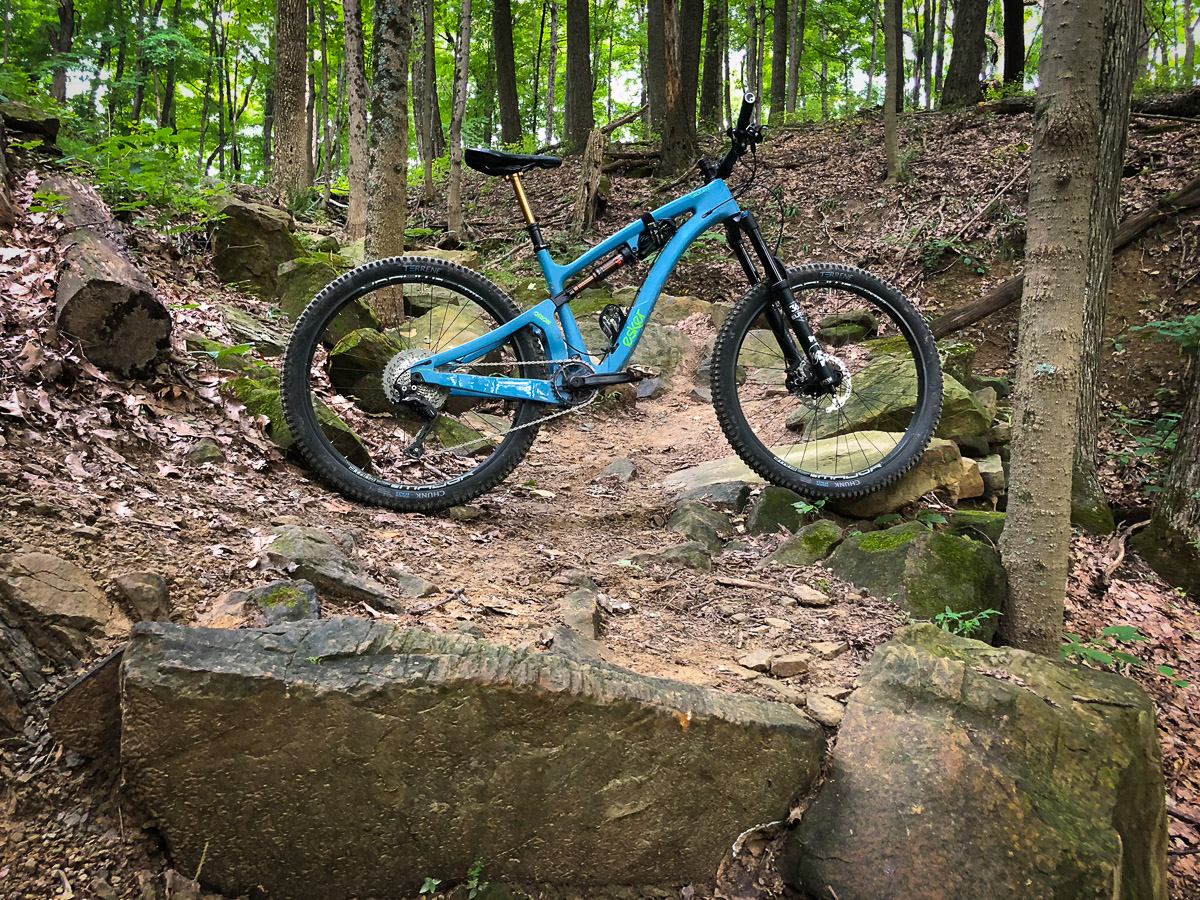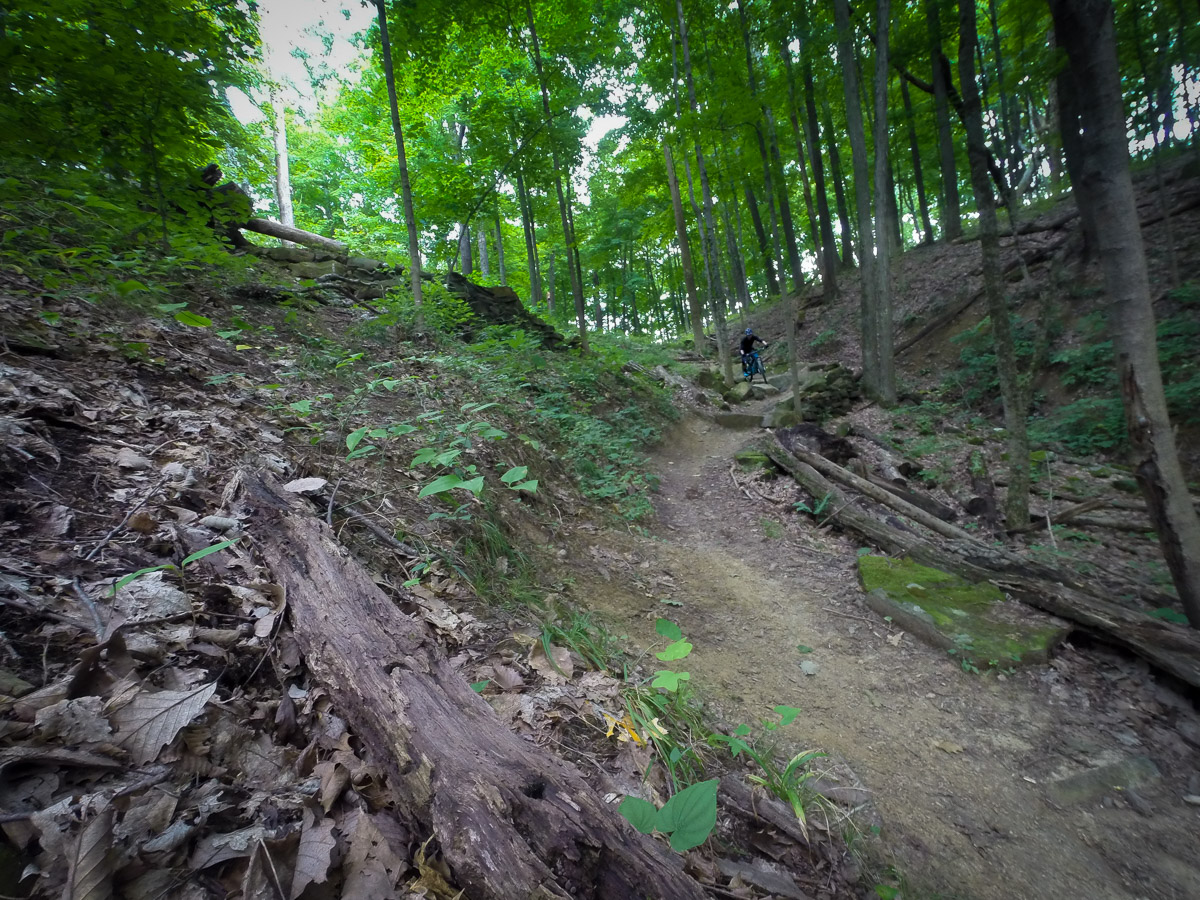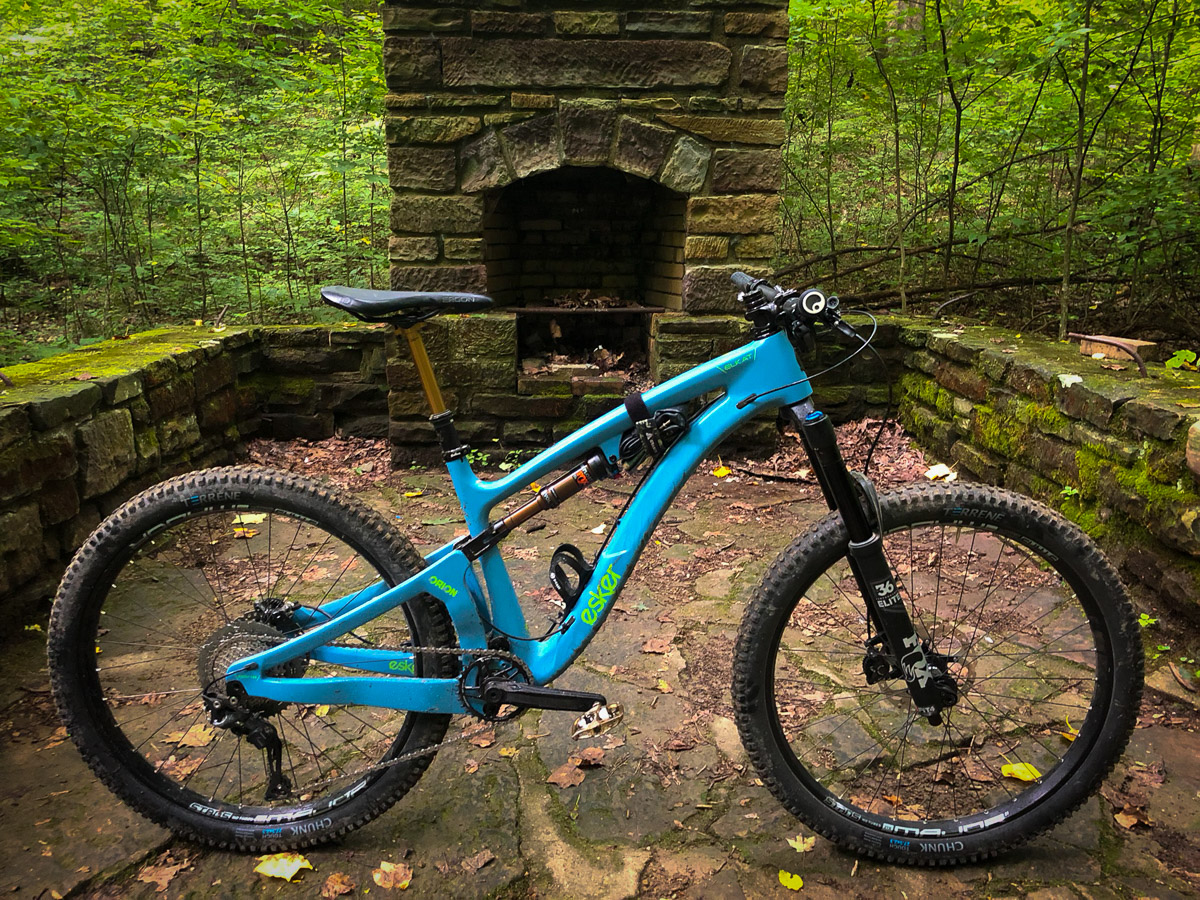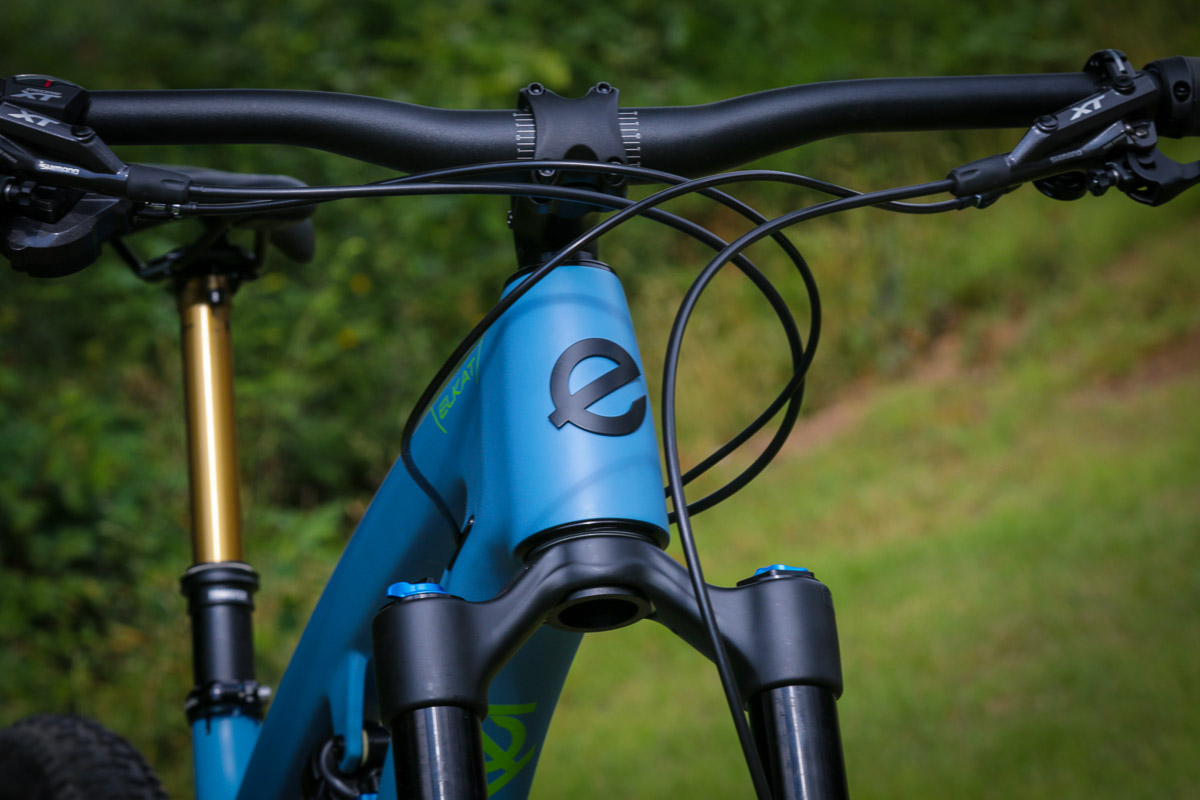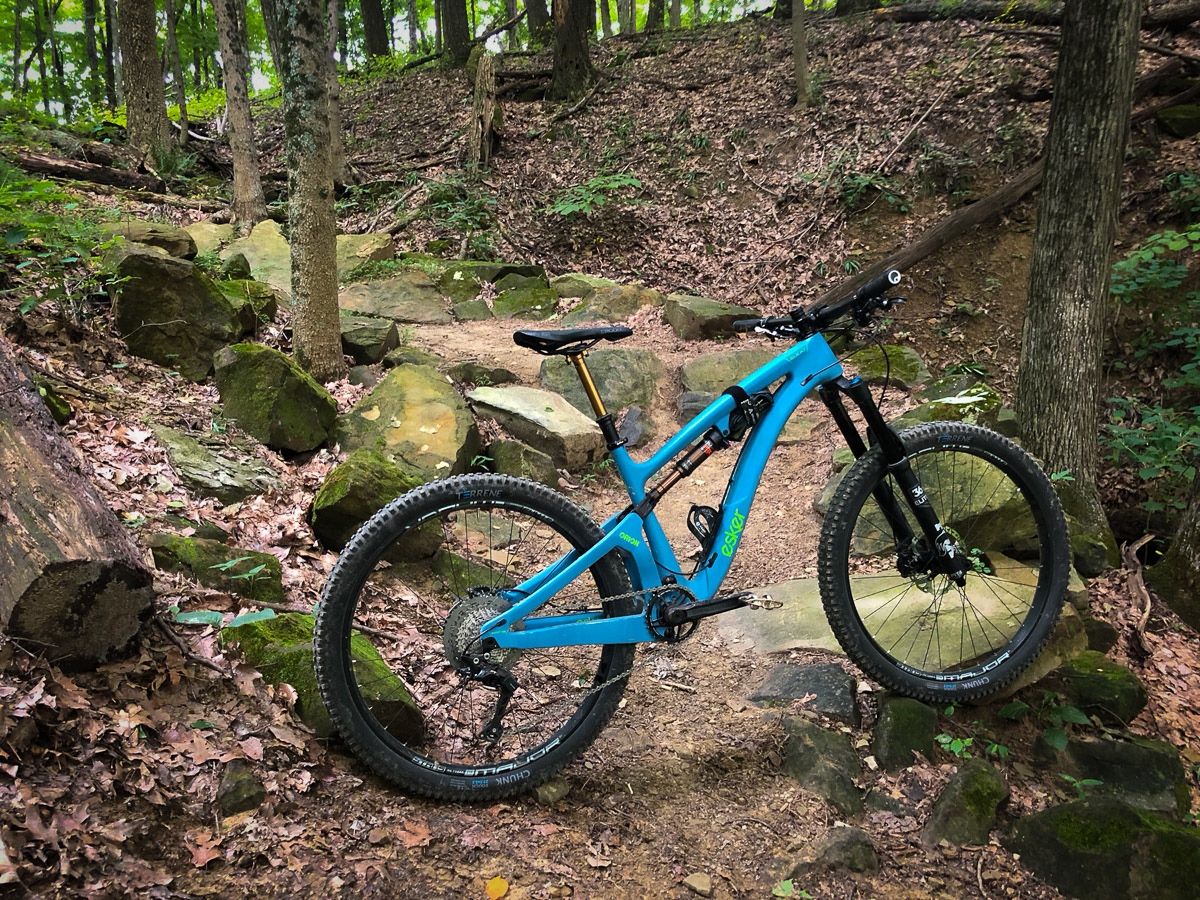It’s always exciting to get to ride and review a new bike, but every once in a while something comes along that gets us really excited. The opportunity to ride a brand new bike from a new bike company that has an all new suspension system from a world famous designer, would certainly qualify.
However, that excitement can often lead to disappointment. I often build up something in my head before trying it to the point that the end result is often a let down. Fortunately, with the Esker Elkat that was definitely not the case.
Over the years I’ve been able to ride a lot of different suspension systems, including a number developed by Dave Weagle himself. But the Orion system is truly something special. Something we were surprised to see first from a tiny start up like Esker Cycles. Developed specifically for a 1x drivetrain, Orion promises an efficient ride regardless of where the bike is in the travel along with increased traction and suppleness, and boy does it deliver. Immediately, I was impressed at how active the entire suspension felt while remaining extremely pedal efficient.
Our test bike wasn’t a particularly light build checking in at 30lbs on the dot without pedals, but it climbs like a much lighter bike. More importantly though, even when climbing under full power the suspension remains supple enough to float over everything in its path making for an unbelievable climber. Gnarled root sections that normally offer a bit of a challenge are easily conquered with little effort. Square edged hits – even in the middle of a climb are swallowed without complaint. Somewhat like the NAILD R3ACT 2 PLAY suspension out there on the Polygons, the Orion system seems to rely on very little compression and rebound damping in the shock which allows it to remain impressively active. With the frame designed around an excellent kinematic, they’re free to use a simpler shock and still get a bike that pedals well and increases traction at the same time.
The suspension really is good enough to make me question why it took so long to make it to a mountain bike. Obviously, as reported in the earlier story, Dave had hoped that this would end up on a motorcycle, but selfishly, I’m glad that didn’t work out for the sake of the mountain bikers out there.
As good as the suspension is, some of that climbing prowess has to come from the steep effective seat tube angle at nearly 76°. The seat tube is steep enough that it ends up making the top tube and reach feel a bit short. My medium test bike has a top tube length of 587mm and a reach of 440mm, but since you sit farther forward thanks to the steeper seat tube angle the reach feels shorter than it actually is. The trade off is that you’re given a position that works very well for technical climbing and once you drop the seat out of the way on the descent, you have plenty of room to work with.
My test bike came equipped with a riser bar that measured 760mm and was running a 70mm stem, but I found that some changes improved the feel of the bike for me. I had a low rise Race Face Rally R bar sitting around that I cut to 785mm and I installed it with the 50mm Race Face stem, completely slammed on the steerer. Honestly, if I had a 60 or 70mm stem that was a 35mm clamp I would have tried those, but as it was, the wider bar and lower position helped a lot. If anything, the shorter measurement from the saddle to the steerer allows me to run wider bars without feeling too stretched out. It also may be a great option for riders who prefer a more upright and less stretched out fit – but with all of the performance of a modern super bike.
The timing between the last batch of prototypes arriving and the launch of the bike this weekend in Outerbike was pretty short, so my time on the Elkat was pretty limited. But it was more than enough to get a solid feel for the bike and the suspension.
It wasn’t all roses with the Elkat, but my biggest complaints revolve around the cable routing and we’re told that the issues will be fixed for production. Mostly, the cable guides that were on my bike allowed the cables to rattle a bit and wore into the housing. There are also a few things like the cable mount on top of the upper link that will be eliminated for production, along with a few other improvements. All in all, pretty minor complaints – especially if they are indeed solved with the final version.
Also, the lack of a molded chainstay protector seems like a bit of an oversight. Production bikes will get a custom 3M helicopter tape application, but this prototype came with a bare chainstay. So I wrapped it myself with 3M helicopter tape which should make it similar to what Esker has planned for production. The tape completely protects the chainstay – that isn’t the issue. It’s just noisy when compared to some of the advanced chainstay protectors out there these days. I can see a lot of Large or XL Lizard Skins chainstay protectors being sold for these bikes in the future just to quiet the chain slap.
 In spite of that, this is a bike that I can’t wait to log some more time on. I would certainly choose to equip it with lighter wheels – the Stan’s Major S1s are overkill for the 2.3″ tires, and are pretty heavy at a claimed 2094g for the 27.5″ version. But the bike can run up to 2.6″ tires, so if you’re wanting to run something that large, the 38mm inner width wouldn’t be a bad idea. The Terrene Chunk tires with Tough casings performed admirably well in the greasy, humid conditions – though for me the Tough casing on the front is probably overkill.
In spite of that, this is a bike that I can’t wait to log some more time on. I would certainly choose to equip it with lighter wheels – the Stan’s Major S1s are overkill for the 2.3″ tires, and are pretty heavy at a claimed 2094g for the 27.5″ version. But the bike can run up to 2.6″ tires, so if you’re wanting to run something that large, the 38mm inner width wouldn’t be a bad idea. The Terrene Chunk tires with Tough casings performed admirably well in the greasy, humid conditions – though for me the Tough casing on the front is probably overkill.
But that’s also the beauty of the way that Esker is building their bikes. If there’s something you don’t like, you can choose another part. Every bike will be built to order, providing you with your dream build right off the bat. It may have taken Tim Krueger and his team four plus years to get here, and Weagle’s Orion suspension system even longer, but with the first rides of the Esker Elkat, it seems that they have finally arrived.
For the full tech break down, check out our first post here.
